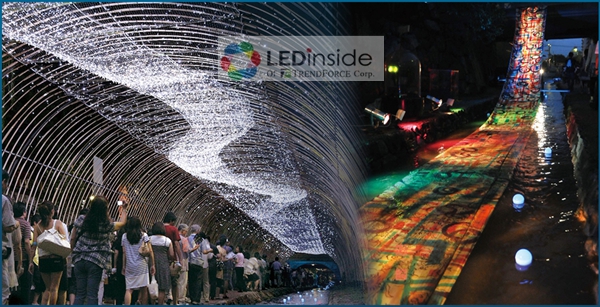According to reports, Horikawa, the birthplace of Kyoto Yuzen silk dyeing, presents "Kyo no Tanabata" with bamboo and LED lights to celebrate Tanabata. People will see a representation of the Milky Way, a night sky full of stars. A touch of Kyoto is added with an illuminated bamboo arch under a thin veil of darkness. The bamboo used in the arch was cut down from abandoned bamboo forests.

The Japanese "Tanabata" came from Chinese legend since long ago has it that Hikoboshi (Altair star) and Orihime (Vega star) separated by the vast Milky Way meet up once a year on the evening of July 7, during which people celebrate "The Festival to Plead for Skills" (Kikkoden) by praying to Vega to become more proficient in needlework, singing and handwriting. And this festival was brought to Japan during the Nara Period (710 to 794 ) and became mixed with the Japanese "Tanabata" Obon tradition practiced until then of weaving a cloth on a loom (=Hata) to offer to ancestral spirits. This is said to be the origin of the current Tanabata (star) festival. The schedule of this event is Saturday, August 3 to Monday, August 12, 2013.





